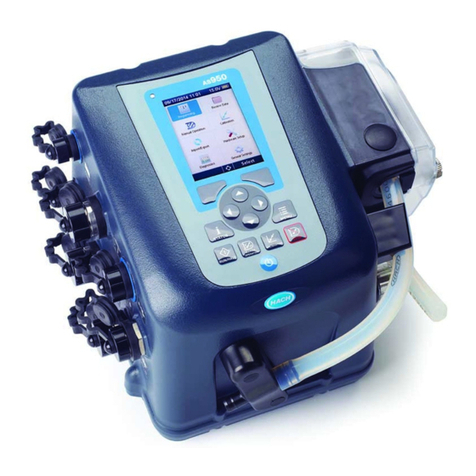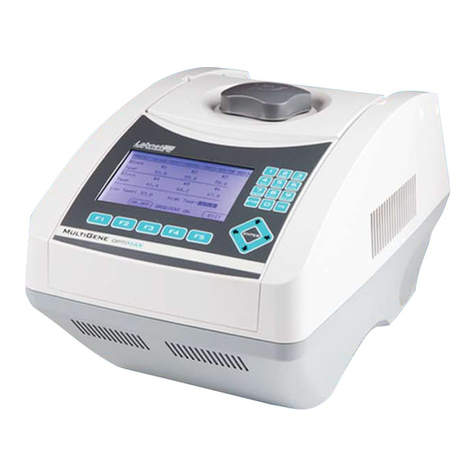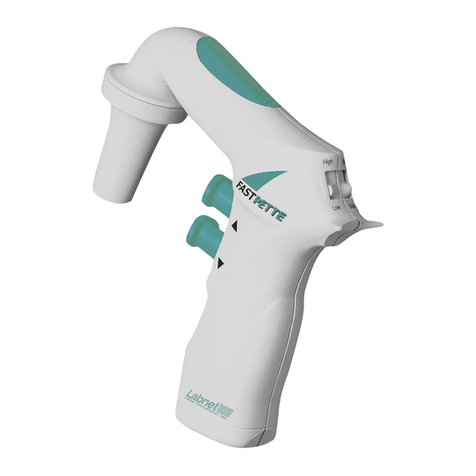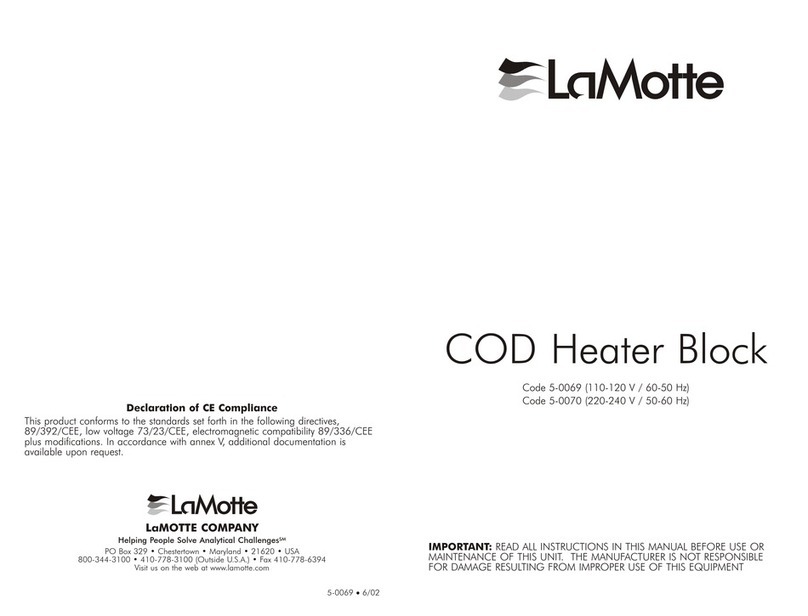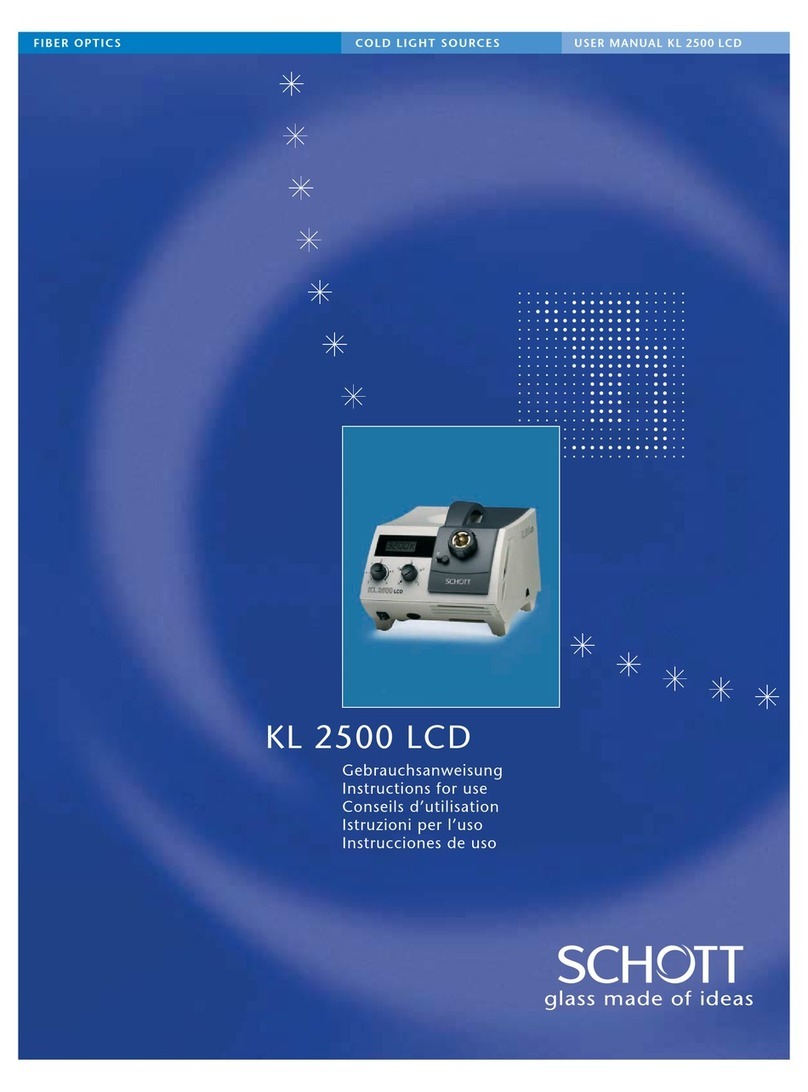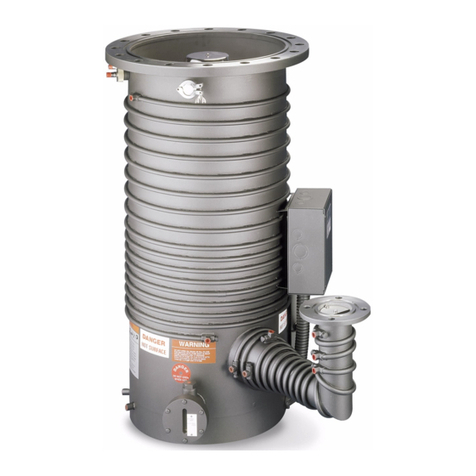Wiggens WH220-HT User manual

English
OPERATING MANUAL
Digital Hot Plate / Stirrer
WH220-HT
WIGGENS GmbH
Gässlesweg 22-24, 75334 Straubenhardt,
Germany
Tel.: 0049 7248 4529088
Wiggens Co., Ltd.
Room 426, Hall A, Office Building M8, No.1
Jiuxianqiao East Road, Chaoyang District,
Beijing 100015, China
Tel: +86 400-809-2068
Fax: +86 400-809-2068-112
info@ wiggens.com
www.wiggens.com
1.220.0330.20-V2.1

Operating Manual
Congratulations!
You have made an excellent choice.
WIGGENS thanks you for the trust you have placed in us.
This operating manual has been designed to help you gain an understanding of the operation and possible applications of
our instruments. For optimal utilization of all functions, we recommend that you thoroughly study this manual prior to
beginning operation.
Unpacking and Inspecting
Please unpack the device carefully. Check that the package is right-side-up and then open it. Check that model of the
product is one that you ordered. Check that there is no damage. If there is any damage, file a damage claim with the
carrier. In the case of any damage a damage report should be requested immediately. These instructions must be followed
fully for us to guarantee our full support of your claim for protecting against loss from concealed damage. The form
required for filing such a claim will be provided by the carrier.
Changes without prior notification reserved
Important:
keep operating manual for future use
2

WIGGENS WH220-HT
Content
1. Intended Use........................................................................................................................................5
2. Operator Responsibility.........................................................................................................................5
2.1. Disposal....................................................................................................................................6
2.2. CE Conformity...........................................................................................................................6
2.3. Technical Specifications.............................................................................................................7
3. Safety Instructions ................................................................................................................................8
3.1. Explanation of Safety Notes.......................................................................................................8
3.2. For Your Protection ...................................................................................................................9
3.3. For protection of the equipment ..............................................................................................11
4. Operating Procedures .........................................................................................................................11
4.1. Environmental Operating Conditions .......................................................................................11
4.2. Installation..............................................................................................................................12
4.2.1. Installing the Digital Hot Plate / Stirrer...............................................................................12
4.2.2. The dimensions of the digital hot plates/stirrer...................................................................14
4.3. Operation ...............................................................................................................................15
4.3.1. Overview of the Hot Plate / Stirrer......................................................................................15
4.3.2. Indicators and Functional Elements....................................................................................16
4.3.3. Operation of the Hot Plate/Stirrer without a Temperature Sensor........................................17
4.3.4. Operation of the Hot Plate/Stirrer without a Temperature Sensor........................................19
4.4. PT100 Temperature Sensor Calibration....................................................................................20
4.5. The USB interface....................................................................................................................22
5. Cleaning and Maintenance .................................................................................................................24
5.1. Routine Cleaning ....................................................................................................................24
5.2. Maintenance...........................................................................................................................25
6. Transport and Storage ........................................................................................................................25
7. Accessories and Spare Parts................................................................................................................26
7.1 Temperature Sensor and Holder................................................................................................26
7.2 Silicone Protective Cover ..........................................................................................................26
3

Operating Manual
7.3. Stir Bar and Retriever Examples ...............................................................................................27
8. Service ...............................................................................................................................................29
8.1. Trouble-Shooting ....................................................................................................................29
8.2. Warranty.................................................................................................................................29
8.3. Contact /Technical Service .......................................................................................................30
4

WIGGENS WH220-HT
1. Intended Use
The WH220-HT is a magnetic stirrer with heating function with the purpose to control the temperature of a solution and
to reach equal temperatures at each point inside the solution. The WH220-HT features an accurate and stable heating
capacity and a unique liquid drainage above the control board in order to prevent liquids from accessing the system. It
also features a memory function for the stirring speed and temperature settings, which helps to enhance the effectiveness
of repetitive processes. The top plate of the WH220-HT is made of glass ceramic, which has optimal heat conductivity and
temperature shock resistance characteristics.
2. Operator Responsibility
Use
- For mixing and/or heating liquids
Range of use
-Laboratories
-Schools
-Pharmacies
This device is suitable for use in all areas except:
- Residential areas
- Areas that are connected directly to a low-voltage supply network that also supplies residential areas.
The safety of the user cannot be guaranteed if the appliance is operated with accessories that are not supplied or
recommended by the manufacturer or if the appliance is operated improperly contrary to the manufacturer’s
specifications.
The products of WIGGENS ensure safe operation when installed, operated, and maintained according to common safety
regulations. This section explains the potential dangers that may arise when operating the instrument and also specifies
the most important safety precautions to preclude these dangers as far as possible.
The operator is responsible for the qualification of the personnel operating the instrument.
The personnel operating the instrument should be regularly instructed about the dangers involved with their job
activities as well as measures to avert these dangers.
Make sure all persons tasked with operating, installing, and maintaining the instrument have read and understand
the safety information and operating instructions.
When using hazardous materials or materials that could become hazardous, the instrument must be operated only by
persons who are absolutely familiar with these materials and the instrument. These persons must be fully aware of
possible risks.
Only qualified personnel are authorized to perform configuration, installation, maintenance and repairs of the
instrument.
Routine operation can also be carried out by untrained personnel who should however be instructed by trained
personnel.
If you have any questions concerning the operation of your instrument or the information in this manual, please contact
us.
5

Operating Manual
2.1. Disposal
At the end of its service life the instrument is to be disposed of in accordance with the local
regulations specified for the disposal of electronic industry waste in an environmentally friendly
manner.
2.2. CE Conformity
The
products described in the operating instructions conform to the requirements of the following
European guidelines:
Low voltage regulations with respect to legal harmonization of the member countries concerning
electric devices for use within certain voltage limits.
EMC guideline with respect to legal harmonization of the member countries concerning
electromagnetic compatibility.
APPROVALS
European
EN61326-1: 2013, 2014/30/EU
EN61010-1: 2010, 2014/35/EU
EN50581: 2012, 2011/65/EU
6

WIGGENS WH220-HT
2.3. Technical Specifications
Model
WH220-HT
Display LED
Top plate dimensions 190*150
PT100 sensor length 170mm
Set temperature range(Top plate) 0~400°C
Set temperature range (With Pt 100 sensor) 0~300°C
Safety temperature 450°C
PID 1 set
Temperature Stability (With PT100 sensor) ±2°C
Stirring speed range 100-1200rpm
Interface type USB
Power Supply AC 220 Volts, 50/60 Hz, 4A
Heating power 800W
Maximum Volume 20 L (5.3 US Gallons, 4.2 UK Gallons)
Timer(min) -
Housing Splash Proof
Order No. 400301
All measurements have been carried out at the stated voltage, frequency, and an ambient temperature of 25°C.
Technical changes without prior notification reserved.
WIGGENS
Order Numbers consist of the Basic Order Number (BON) and the Order Number
Addition (ONA) which explains different characteristics of the product that can vary from
country to country. Order Numbers as stated on the product label and box label are stated as
Full Order Numbers (FON), consisting of the BON followed by the ONA. For a full explanation of
the ONA of your product, please ask your local WIGGENS support or refer to the Order Number
Guide in the
WIGGENS
General Catalog.
7

Operating Manual
3. Safety Instructions
3.1. Explanation of Safety Notes
In addition to the safety warnings listed, warnings are posted throughout the operating manual. These warnings are
designated by an exclamation mark inside an equilateral triangle. “Warning of a dangerous situation (Attention! Please
follow the documentation).”
Symbol
Additional term / Description
Warning signs
The danger is classified using a signal word. Read and follow these important instructions for
averting dangers.
Warning!
Describes a
possibly
highly
dangerous situation. If these instructions are not followed, serious
injury and danger to life could result.
Caution!
Describes a
possibly dangerous situation. If this is not avoided, slight or minor injuries could result.
A warning of possible property damage may also be contained in the text.
Notice!
Describes a
possibly harmful situation. If this is not avoided, the product or anything in its
surroundings can be damaged.
Note!
Draws attention to something special.
Important!
Indicates usage tips and other useful information.
8

WIGGENS WH220-HT
3.2. For Your Protection
Make sure you read and understand all instructions and safety precautions listed in this manual before installing or
operating your instrument.
Keep the operation instructions in a place where they can be accessed by everyone.
Ensure that only trained staff work with the appliance.
Follow the safety instructions, guidelines, occupational health and safety and accident prevention regulations.
Socket must be earthed (protective ground contact).
Make sure the product is checked for proper condition regularly (depending on the conditions of use). Regularly
check (at least every 2 months) the proper condition of the mandatory, warning, prohibition and safety labels.
Connect the instrument to a power socket with earthing contact (PE-protective earth).
The power supply plug serves as a safe disconnecting device from the line and must always be easily accessible.
Do not stay in the area below the instrument.
Never operate damaged equipment.
Never operate instruments with damaged mains power cables.
Observe all warning labels.
Never remove warning labels.
Be aware of tripping. Never route the connection cable in highly frequented areas!
Be aware of possible cable damage. Repairs are to be carried out only by qualified service personnel.
Always turn off the instrument and disconnect the mains cable from the power source before performing any service
or maintenance procedures, or before moving the instrument.
Warning!
This is not an explosion proof instrument. Do not use with any highly flammable or explosive
materials.
Warning!
Risk of burns!
Exercise caution when touching the housing parts and the heating plate. The heating plate can reach temperatures in
excess of 500 °C. Pay attention to the residual heat after switching off.
Please make sure that the mains cable does not contact the heating plate.
Warning!
Effects of the magnetic field have to be taken into account.(e.g. data storage media, cardiac
pacemaker…)
The hot plate / stirrer must only be operated in the presence of an exhaust system!
(When heating with volatile samples, e.g. silicone oil)
Never operate the hot plate/stirrer in wet areas!
Be aware of the danger of electric shocks!
Warning!
Be aware of the potential danger of a fire outbreak due to overheating!
Warning!
Wear your personal protective equipment in accordance with the hazard category of the media
to be processed. Otherwise there is a risk from:
-Splashing and evaporation of liquids
-Ejection of parts
9

Operating Manual
-Release of toxic or combustible gases.
Warning!
When in an emergency, disconnect the main power plug.
Gradually increase the speed.
Reduce the speed if:
- The medium splashes out of the vessel because the speed is too high
- The appliance is not running smoothly
- The container moves on the base plate.
Caution! Only process and heat up any media that has a flash point higher than the adjusted safe temperature limit
that has been set 550℃(WH220-HT).
The safe temperature limit must always be set to at least 25℃lower than the fire point of the media used.
Beware of hazards due to:
- Flammable materials
- Combustible media with a low boiling temperature
- Glass breakage
- Incorrect container size
- Overfilling of media
- Unsafe condition of container.
The base plate can heat up due to the action of the drive magnets at high motor speeds, even if the Hot Plate/Stirrer
is not operational.
Process pathogenic materials only in closed vessels under a suitable extractor hood.
Only process media that will not react dangerously to the extra energy produced through processing. This also
applies to any extra energy produced in other ways, e.g. through light irradiation.
Please observe the operating instructions for any accessories used.
Ensure that the external temperature sensor (PT 100) is inserted in the media to a depth of at least 30 mm.
The PT 100 external temperature sensor must always be inserted in the media when connected.
Safe operation is only guaranteed with the accessories described in the “Accessories” chapter.
Accessories must be securely attached to the device and cannot come off by themselves. The center of gravity of the
assembly must lie within the surface on which it is set up.
When using PTFE-coated magnetic bars, the following has to be noted: Chemical reactions of PTFE occur in contact
with molten or solute alkali metals and alkaline earth metals, as well as with fine powders of metals in groups 2 and
3 of the periodic system at temperatures above 300-400℃Only elementary fluorine, chloro trifluoride and alkali
metals attack it; halogenated hydrocarbons have a reversible swelling effect.
Warning!
Warning referring to a particular group of people. Example: People with pacemakers or ICDs
(Implanted Coronar Defibrillator)
10

WIGGENS WH220-HT
3.3. For protection of the equipment
You have received a product designed for industrial and experimental use. Nevertheless, avoid strikes to the housing,
vibrations, damage to the operating-element panel, and contamination.
Make sure that the mains power supply has low impedance to avoid any negative effects on instruments being
operated on the same mains.
Do not expose the unit to sunlight
Sudden drops may cause damage in the interior of the instrument.
Transport the instrument with care.
The device can be damaged when sucking in aggressive gases or vapor through the installed ventilator.
Press the power button to interrupt the stirrer, rather than disconnect the main power plug directly.
The voltage stated on the nameplate must correspond to the mains voltage.
Do not cover the device, even partially e.g. with metallic plates or film. This results in overheating.
Protect the appliance and accessories from bumps and impacts.
Ensure that the base plate is kept clean
Observe the minimum distances between devices, between the device and the wall and above the assembly (min.
800 mm).
4. Operating Procedures
4.1. Environmental Operating Conditions
The Hotplate / Stirrer can be operate in the following conditions:
Indoors
Altitudes up to 2000 meters
Temperatures from+5°C to +40°C
Maximum relative humidity 80% for temperatures up to +31°C, linear decrease down to 50% relative humidity at a
temperature of +40°C
Max. mains fluctuation of ±10 % are permissible
Overvoltage category II
11

Operating Manual
4.2. Installation
4.2.1. Installing the Digital Hot Plate / Stirrer
Place the hot plate/ stirrer on a stable, flat surface and proper environment for operation.
If a PT100 temperature sensor package was ordered:
Install the sensor holder into the screw inlet on the back of the
hot plate / stirrer
Place the clamp onto the holder and tighten the screw
connecting the holder and the clamp
Mount the Pt100 temperature sensor on clamp and tighten the
screw connecting the temperature sensor and the clamp
12

WIGGENS WH220-HT
Connect the
PT100 temperature sensor cable to the
corresponding connector in the back of the hot plate / stirrer
Connect the stirrer to the power supply. The power supply voltage, frequency and current are respectively AC
108V~125V、60Hz、10A.
Connect the power supply to a power socket with earthing contact.
13

Operating Manual
4.2.2. The dimensions of the digital hot plates/stirrer (after connect PT100Teperature sensor)
CAUTION!
Do not use voltages that are higher or lower than
10% of the voltage specified on the
label, which is on the backside of the instrument.
Keep the power cord and temperature sensor cable off of the hot plate while heating.
Put the solution on the top plate before operating the instrument.
Heating corrosive liquids under poor ventilation hoods will shorten the life of the
electronic components inside the instrument.
Upon the first heating operation, a particular smell and white smoke can appear. This is
normal. Put the instrument under a fume hood and moderately heat for about one hour
until the smell and smoke fully disappear.
If toxic gases are released, air circulation must be kept.
The safe temperature limit must always be set to at least 25℃lower than the fire point
of the media used.
.
48.5c
m
24cm
24.5c
m
14

WIGGENS WH220-HT
4.3. Operation
4.3.1. Overview of the Hot Plate / Stirrer
No.
Description
1
PT100 Temp. Sensor
2
Heating Zone
3
LED Digit Display
4
Operation Panel
5
Instrument Housing
6
Boss Head Clamp
7
Installation Stand
7
6
5
4
3
2
1
15

Operating Manual
4.3.2. Indicators and Functional Elements
No. Icon Description
1 POWER Indicates if the power switch is turned on or off
2 START Indicates if either the hot plate or stirring or both are turned on
3 ALARM Indicates if there is an
error occurring. If the ALARM indicator is on it is
complemented by an alarm sound.
4 SURFACE HOT Indicates that the temperature of the top plate is over 60°C
5 Set Temp Indicates the set temperature
6 Set RPM Indicates the set speed.
7 Temp
Indicates the actual temperature
Of the top plate, when no temperature sensor is connected
Of the solution, when a temperature sensor is connected
8 RPM Indicates the actual speed
9
START / STOP Button
Press the START / STOP Button to start or stop the
instrument. (The upper left start
indicator is lit when the instrument is in operation)
10
SELECT Button
Press the SELECT Button to select between the setting of temperature, overheating
protection temperature, stirring speed, and timer.
11
Up Button
Press the up button to increase the set value. If pressed continuously, the increase
will be quicker.
12
Down Button
Press the down button to decrease the set value. If pressed continuously, the
decrease will be quicker.
13
CLEAR Button
The button clears up all set values and sets them to 0. The timer is set to continuous
mode.
16

WIGGENS WH220-HT
4.3.3. Operation of the Hot Plate/Stirrer without a Temperature Sensor
1.Switching the Hot Plate/Stirrer on
Plug in the power cord and turn on the main power switch
Switch the hot plate / stirrer on by pressing the
main switch on the
right side of the instrument.
The display
lights up and shows the model and software version of
the instrument.
2.Setting the temperature
e.g. The Set temperature is 70℃
Press the SELECT Button to select Set Temp
Press the Up Button and Down Button to set the required
temperature
3.Setting the stirring speed:
e.g. Set “RPM” is 800
Press the SELECT Button to select Set RPM
Use the Up Button and Down Button to set up the required stirring
speed
4. Starting the Instrument
e.g. The actual temperature is 70℃
e.g. The actual “RPM” is 800
After all the settings are completed, press the START / STOP Button to
start the stirring / heating process.
The START indicator will light up
In order to monitor the actual temperature / stirring speed press the
SELECT button to select Pro.TEMP / Pro.RPM.
5. Switching off the Hot Plate/Stirrer
Press the start/stop button again, and turn off the main power switch
The Hot Plate/Stirrer is now switched off.
17

Operating Manual
Note!
The temperature / stirring speed can be adjusted during operation
Press the SELECT Button to change the current display during operation
CAUTION!
Residual heat! Do not touch the heating zone!
Risk of overheating! Do not pull out the mains plug!
Do not unplug and turn off the mains of the hot plate before the heating zone has
completely cooled down, then turn off the mains switch and pull out the mains plug.
Risk of deflagration, explosion and fire hazard when heating flammable liquids! Only heat
up liquids with a flash point above 580°C! Be aware of increased ease of ignition of hot
liquids!
Always cover the vessel to prevent hot liquids from getting into contact with the heating
zone(e.g. by liquid splashing or boiling over, or through escaping gases)!
18

WIGGENS WH220-HT
4.3.4. Operation of the Hot Plate/Stirrer without a Temperature Sensor
Note!
In contrast to operation without temperature sensor, the laboratory hot plate now
features:
Automatic temperature control instead of fixed heating temperature controlled by the
heating power.
When you press “Select” to see Pro.temp, it will display solution temperature.
1.Connecting the Temperature Sensor
Make sure that the hot plate / stirrer is completely switched off.
Be sure to use the correct temperature sensor
Connect the temperature sensor at the rear of the hot plate / stirrer
Make sure that the cable of the temperature sensor is routed so that it
cannot touch the heating zone.
Immerse the temperature sensor into the liquid min.30 mm in depth.
2.Switching the Hot Plate/Stirrer on
Please refer to 4.3.3.
3.Setting the temperature
e.g. The actual “TEMP” is 70°C
Refer to 4.3.3 for how to set the temperature, but please note the
following points
Now the instrument will enter the external temperature control
mode(to measure and control the temperature of the solution
accurately) The maximum set temperature is 300°C
Press the SELECT Button to select Pro Temp, and now the display
shows the solution actual temperature measured by the temperature
at that time.
4.Setting the stirring speed
Please refer to 4.3.3.
5. Start the Instrument
Please refer to 4.3.3.
6. Switching off the Hot Plate/Stirrer
Please refer to 4.3.3.
19

Operating Manual
4.4. PT100 Temperature Sensor Calibration
The PT100 temperature sensor can be connected to measure and control the heated liquid temperature. The sensor has
been initially calibrated in the factory. If the measured temperature is slightly different from the temperature standard you
are using, a follow-up calibration is also possible with the following steps.
Calibration Procedure
Plug the PT100 temperature sensor into the designated input and turn
on the main power switch
Put the PT100 sensor and third-party thermometer in the temperature
environment of T1, T1 means the first measured temperature point for
calibration (e.g. 300 ml silicone oil, the temperature 1 stability at 24
degree, this value should be measured by the third-party thermometer)
e.g. the digital display shows “S1”
Press the CLEAR Button 10 times to enter the calibration mode (You
have reached the calibration mode when all LED lights light up and the
digital display shows “S1”. “S1” means Set 1 (The first setting
temperature for calibration).
e.g. TI Set to 24
Wait for the “T1” to reach and equilibrium(24℃)
refer to the shows value on third-party thermometer and Press Up
Button and Down Button to set the actual value of T1 (e.g. Set to 24 )
e.g. The corresponding AD value of S1
is 429
now the display shows its corresponding AD read value of S1
Press and hold the START / STOP Button and observe the value change
on the display
Release the START / STOP button when the temperature fluctuation is
less or equal to ±1
Press the SELECT Button on the operation panel. The display will shows
“S2”. “S2” means Set 2 (The second setting temperature for
calibration).
Put the PT100 sensor and third-party thermometer in the temperature
environment of T2, T2 means the second measured temperature point
for calibration (e.g. 300 ml silicone oil, the temperature stability at
151 degree, this value should be measured by the third-party
20
Table of contents
Popular Laboratory Equipment manuals by other brands

Agilent Technologies
Agilent Technologies 83620A Service manual

PASCO
PASCO Brolight SE-9629 instruction manual
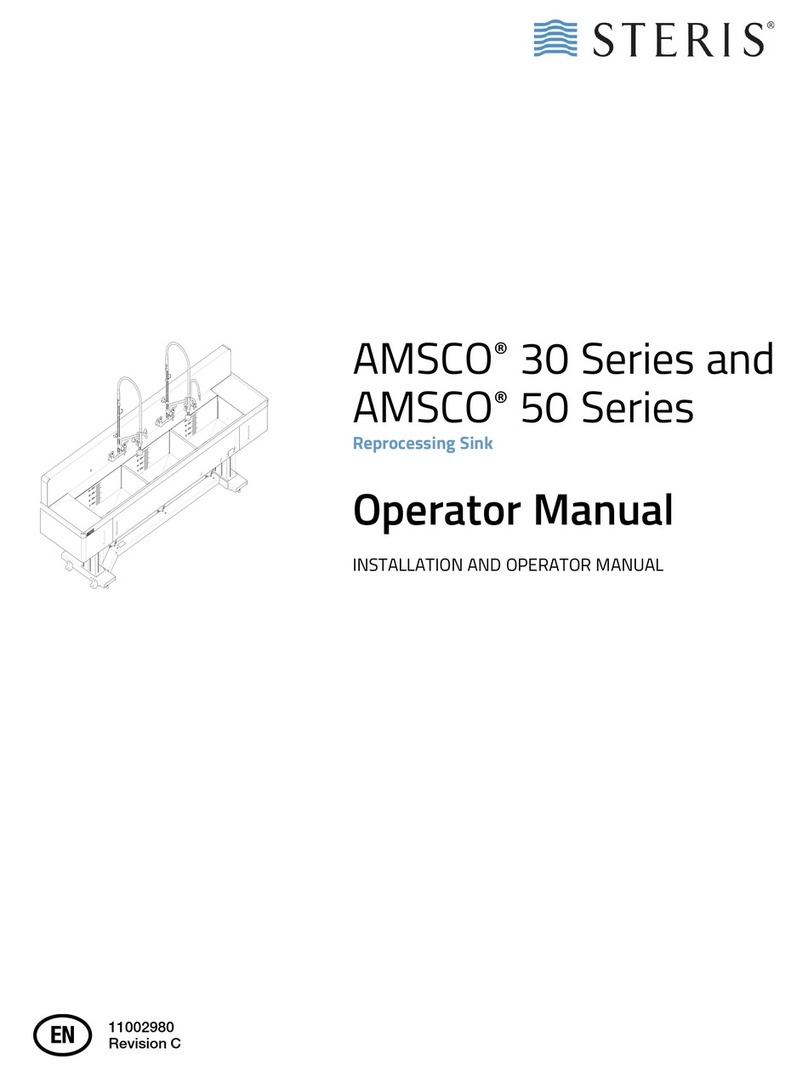
Steris
Steris AMSCO 30 Series Operator's manual

Benchmark
Benchmark Orbi-Shaker Operation manual
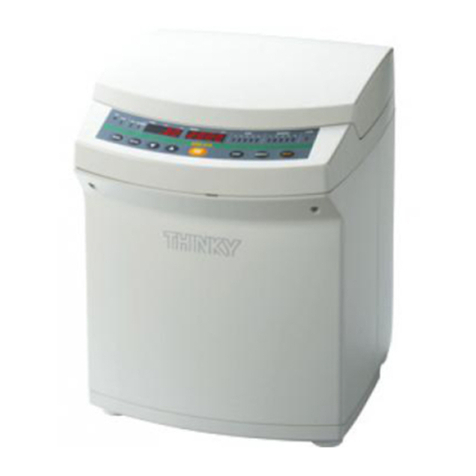
Thinky
Thinky ARE-310 instruction manual
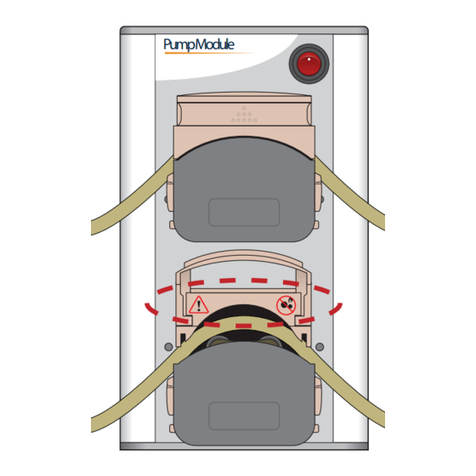
Agilent Technologies
Agilent Technologies Pump Module Original user guide
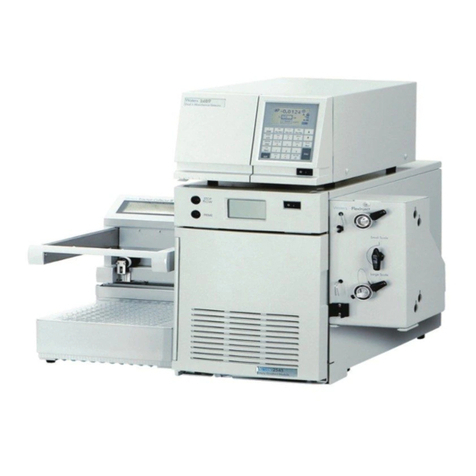
Waters
Waters Prep 150 LC System quick start
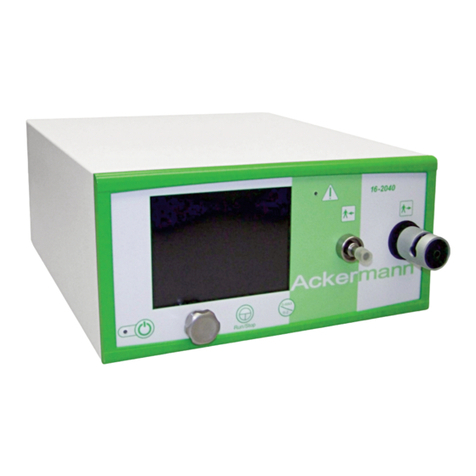
ACKERMANN
ACKERMANN 16-2040N user manual
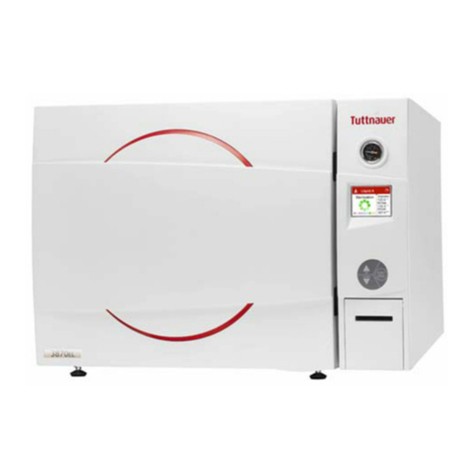
Tuttnauer
Tuttnauer ELCPVG-D Operation & maintenance manual
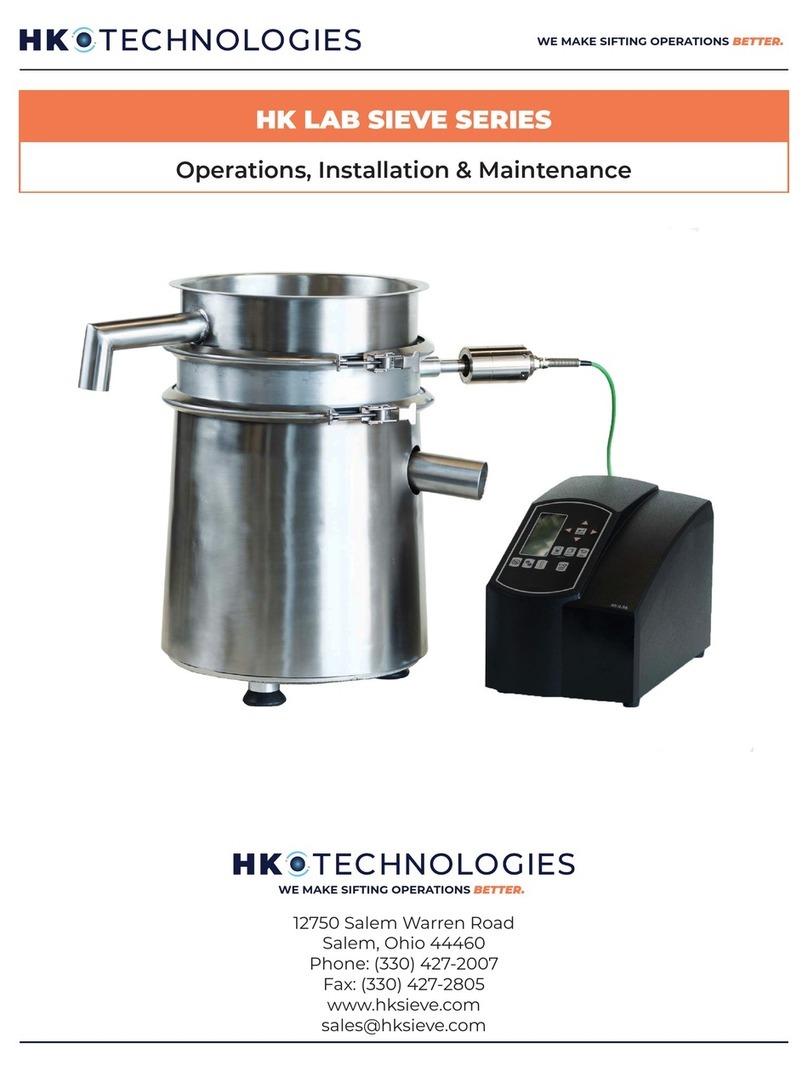
HK
HK SIEVE Series Installation, Maintenance and Operation
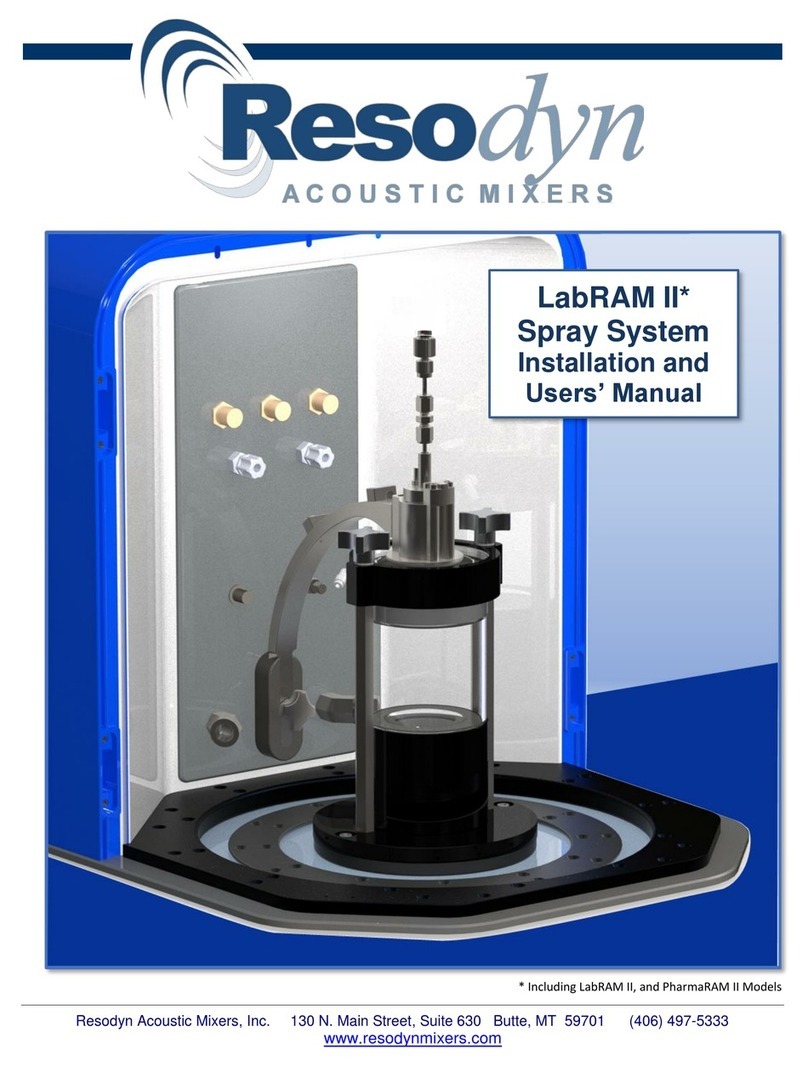
Resodyn
Resodyn LabRAM II Installation and user manual

Hauschild
Hauschild SpeedMixer DAC 400.2 VAC-P user manual
